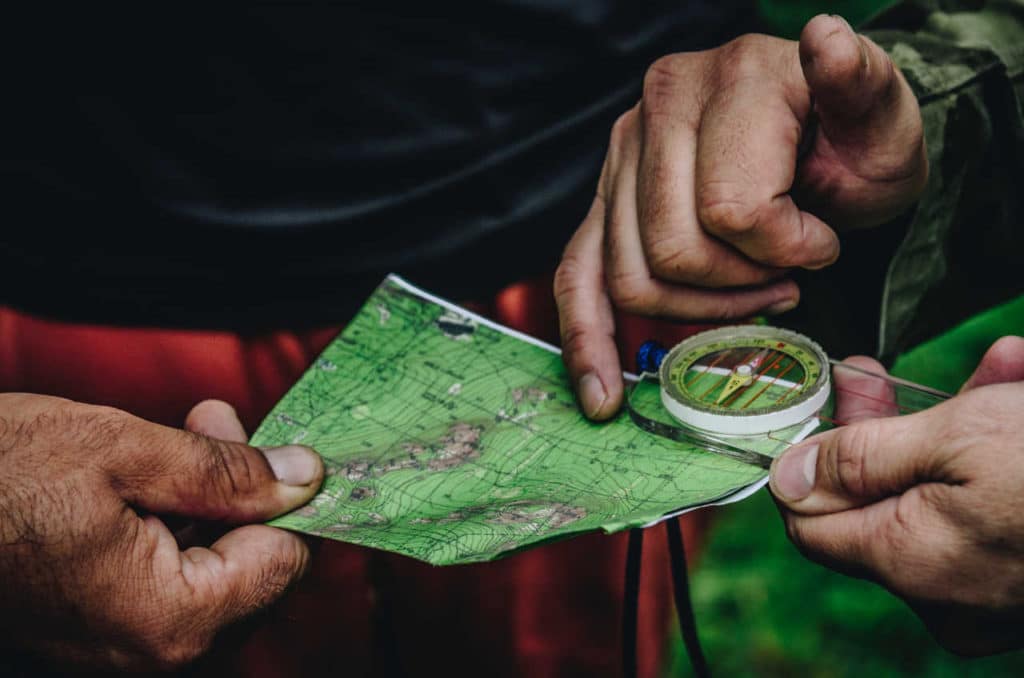Guest Post: What Should You Always Bring On A Day Hike?

Categories :
We may earn money or products from the companies mentioned in this post.
I am proud to introduce to you James Woods, a fellow avid outdoor enthusiast, and owner of TripToTheWild.com where he shares his love of the outdoors and to help people find their way outside in order to enjoy the great outdoors. There, you can find plenty of great Outdoor Recreation Reviews and Advice to help you get yourself out in nature to enjoy what Mother Nature has to offer. Enough from me…take it away, James.

Hiking is a great activity that brings us outside and allows us to engage ourselves in nature for a moment. Day hiking is a great activity that isn’t an expensive hobby or pastime. There are always lessons to be learned, no matter if you are new to hiking or have been doing it for your whole life. This article will review a list of things you should always bring on your day hike. The items on the list are to make your hiking trip more enjoyable and in case the hike doesn’t go as plan.
This list is for those hiking in state or national parks that will be further away from civilization in case something happens. This article will still be beneficial for those hiking in city parks, but you might not need everything on this list, so use your discretion.
Backpack
You won’t be able to carry much without a backpack. If you are starting out and new to hiking, then don’t worry about buying an expensive or special backpack. They are nice and worth the money, but make sure you like hiking before you invest in something of higher quality. A simple school backpack will suffice for the beginning.
Map and Compass
I’ve been hiking and backpacking for over 20 years. And the biggest lesson I’ve learned from my experience is the importance of bringing a map and compass. It’s almost embarrassing to say, but I’ve been lost more than a few times on the trail. One mistake I’ve made is looking at a trail and thinking, “oh, this is easy, just one big loop, so I don’t need to bring a map.” Well, I was wrong. Some trails were not marked on the map and other trails that were had no signs telling you which path to take. So, when you encounter these forks in the road, and you have to decide which trail is the right trail. Solving this issue is a lot easier with a map and compass.
Another experience I had was hiking in Sequoia National Park in mid-spring with my wife (this was the first time I took my wife camping and hiking). There were still snow patches that covered parts of the trail. As we were hiking on the trail, the trail soon disappeared below us. The snow patches covered the trail, and we started to guess which way was the trail. Eventually, we became lost.

With the snow covering the trail, it was nearly impossible to find which way was the right way. The sun was beginning to set, and the temperature was dropping. I took a deep breath, took out my map and compass. I oriented myself on the map by using the compass and looking for landmarks such as rivers and roads on the map. I decided that based on which way the compass was pointing, and where the river was, we only had to head south, and we would eventually run into the trail again, and hopefully, there wouldn’t be any snow patches covering it. We made the decision and found the trail about 20 minutes later. And after that, we were able to enjoy ourselves again.
Water
Water is the key to life and should always be with you on a hike. Make sure to bring plenty of water. How much water should you be drinking while hiking? That’s a hard question to answer because each person is different. Also, it depends on how long your hike is, the difficulty, and the weather. All play a factor in how much water you should bring. If I am hiking around 6-miles, I will bring 2 quarts of water with me. Sometimes I’ll bring a water filter if I will be hiking by a river.
Matches or Lighter
Bring matches or lighter is on my list in case I get lost, and I need to warm up. A fire can provide warmth and comfort. Hopefully, you will never need them but don’t hike without them.
Flashlight
In my example of getting lost in Sequoia National Park while the sun was beginning to set, provides a great reason why you should bring a flashlight. I had a flashlight with me in case it got too dark to hike without a light. You might not be lost, but you could have been delayed because someone in your group had an injury that slowed them down, or maybe there was an illness. It’s also a good idea to have a flashlight on you in case there is an emergency, and people need to locate you.
Cell Phone
Bring your cell phone in case there is an emergency. However, turn off your cellphone while you are hiking. Two reasons why: The first, you are hiking for a reason, so turn off your phone and enjoy the hike. Secondly, if you are in an area that has bad service or no service, your cell phone’s battery will die faster because it is looking for a signal.






